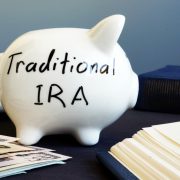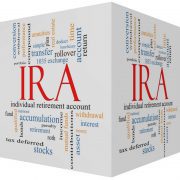Answering the Most Pertinent Self-Directed SEP IRA Questions
Self-Directed IRAs have gained significant attention in recent years. Among the various types of Self-Directed IRAs, the Self-Directed SEP IRA stands out as a popular choice for self-employed individuals and small business owners. In this article, we will address some of the most pertinent questions surrounding Self-Directed SEP IRAs, providing you with the information you need to make informed decisions about your retirement savings.
What is a Self-Directed SEP IRA?
It’s hard to get more pertinent than this question. A Self-Directed SEP IRA is a retirement account designed for self-employed individuals and small business owners. SEP stands for Simplified Employee Pension, and it allows you to make contributions on behalf of yourself as the employer and any eligible employees. These contributions are tax-deductible, and the funds grow tax-deferred until retirement.
Who is Eligible for a Self-Directed SEP IRA?
Self-Directed SEP IRAs are particularly attractive to self-employed individuals and small business owners who want to save for retirement while enjoying the benefits of tax deductions. Eligibility requirements include being at least 21 years old, having worked for the business for three of the past five years, and earning a minimum amount determined annually.
What are the Contribution Limits for Self-Directed SEP IRAs?
According to the IRS, “Contributions an employer can make to an employee’s SEP-IRA cannot exceed the lesser of: 25% of the employee’s compensation, or $66,000 for 2023 ($61,000 for 2022, $58,000 for 2021 and $57,000 for 2020).” If that sounds high, that’s because it is. It’s one of the chief advantages of using a SEP IRA: you can utilize far higher contribution limits to contribute to your retirement portfolio. If you have a higher income because of your business, for example, this can be a great way to catch up on your retirement contributions without using literal catch-up contributions.
Can I Contribute to both a Self-Directed SEP IRA and a Traditional IRA?
Yes, you can contribute to both a Self-Directed SEP IRA and a traditional IRA. However, it’s important to understand that your contributions to the SEP IRA may affect the deductibility of your traditional IRA contributions. Consulting with a financial advisor or tax professional can help you navigate the best approach for your specific circumstances, as everyone’s will be different.
What Investment Options are Available Within a Self-Directed SEP IRA?
Unlike traditional retirement accounts, Self-Directed SEP IRAs provide a broader range of investment options. With a Self-Directed SEP IRA, you can invest in various assets, such as stocks, bonds, mutual funds, real estate, and even private placements. This flexibility allows you to tailor your investment strategy to align with your financial goals and risk tolerance.
How Can I Make Sure I Comply with IRS Regulations?
To ensure compliance with IRS regulations, it’s crucial to work with a reputable Self-Directed IRA custodian like American IRA. They specialize in administering Self-Directed IRAs and can guide you through the process, helping you navigate the complexities of IRS rules and regulations.
Self-Directed SEP IRAs offer an attractive retirement savings option for self-employed individuals and small business owners. By taking advantage of the tax-deductible contributions and the flexibility to invest in a wide range of assets, you can take control of your retirement savings and potentially grow your wealth over time. And given that SEP IRAs have such high contribution limits, using one of these accounts can sometimes feel like a shortcut to building your retirement portfolio—provided you make the necessary commitment.
Interested in learning more about Self-Directed IRAs? Contact American IRA, LLC at 866-7500-IRA (472) for a free consultation. Download our free guide or visit us online at www.AmericanIRA.com.










